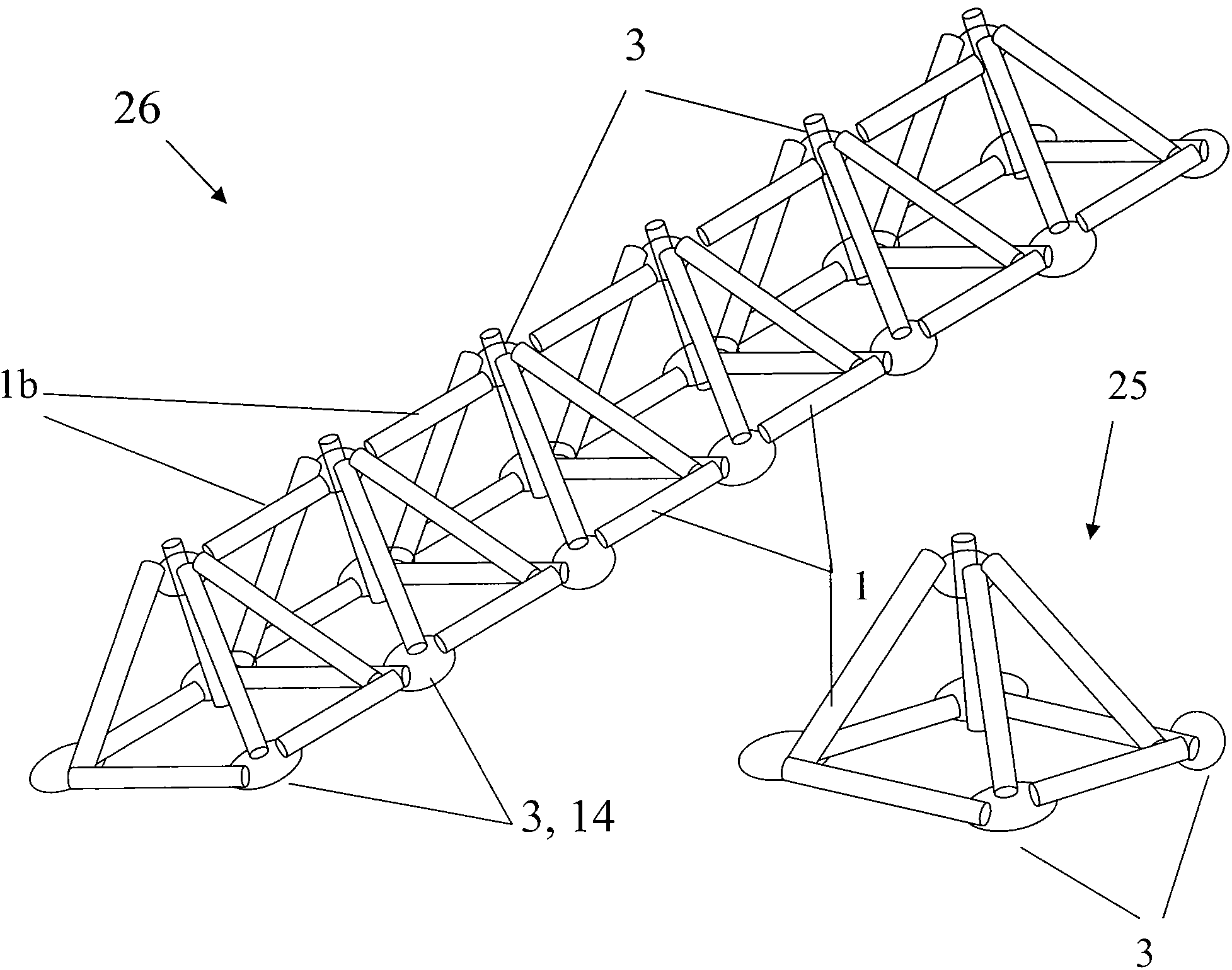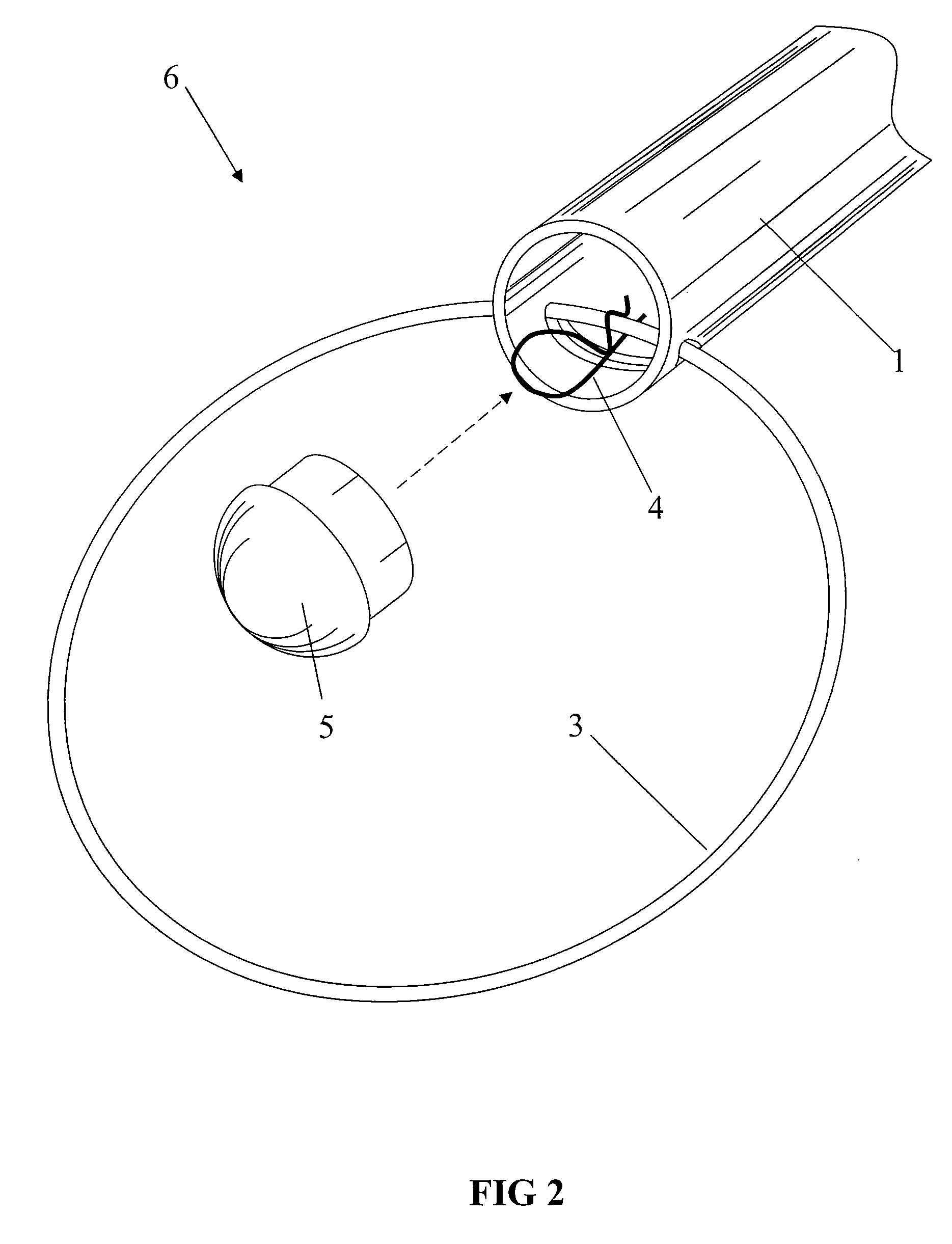Space frame hub joint
a hub joint and space frame technology, applied in the direction of rod connections, couplings, building repairs, etc., can solve the problems of high cost of conventional hub joints, significant time-consuming and labor-intensive assembling or disassembling, and custom-made components and special tooling
- Summary
- Abstract
- Description
- Claims
- Application Information
AI Technical Summary
Benefits of technology
Problems solved by technology
Method used
Image
Examples
Embodiment Construction
[0080]FIG. 1 shows a longitudinal tubular member 1, with a transverse slot or notch 2, cut through a circumferential wall of the member, which is adjacent to the end of the member. The figure also shows ring 3, pin 4, and end cap 5. The components in FIG. 1 are assembled by inserting ring 3 into slot 2. The pin 4 is then inserted through the open end of the tubular member for enveloping the ring segment inserted through notch 2. The pin 4 thus prevents the ring from falling out of the notch. End cap 5 is fitted into the end of the tubular member, after the pin is inserted. This provides a covering for the open end of the member. The end cap 5 is shown inserted into the tube end; however, an outside end cap may be used with a slightly larger end cap and ring diameter.
[0081]The notch 2 may be formed at one end or both ends of the tubular member, for example, one half inch from each end. The tubular member 1 is free to pivot almost 360 degrees about its ring segment while still retaini...
PUM
 Login to View More
Login to View More Abstract
Description
Claims
Application Information
 Login to View More
Login to View More - R&D
- Intellectual Property
- Life Sciences
- Materials
- Tech Scout
- Unparalleled Data Quality
- Higher Quality Content
- 60% Fewer Hallucinations
Browse by: Latest US Patents, China's latest patents, Technical Efficacy Thesaurus, Application Domain, Technology Topic, Popular Technical Reports.
© 2025 PatSnap. All rights reserved.Legal|Privacy policy|Modern Slavery Act Transparency Statement|Sitemap|About US| Contact US: help@patsnap.com



